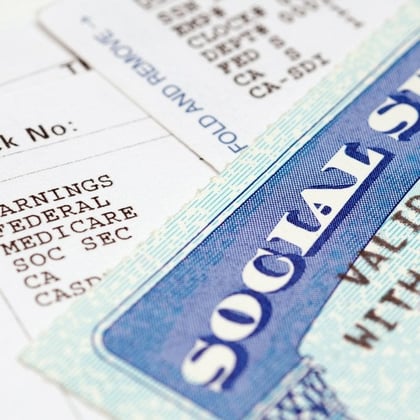The consumer price index data for July, released Wednesday, shows 8.5% inflation over the past 12 months before a seasonal adjustment and was unchanged from June to July on a seasonally adjusted basis. In June, prices rose by 9.1% over 12 months and 1.3% from May.
Based on this data, the Senior Citizens League estimates the Social Security cost-of-living adjustment, or COLA, for 2023 could be 9.6%, lower than the 10.5% it predicted last month. A 9.6% COLA would be the biggest increase since 1981. The adjustment would increase the average retiree benefit of $1,656 by $159, according to the league.
If inflation runs “hot” or higher than the recent average, the COLA could be 10.1%; if inflation runs “cold” or lower than the recent average, the COLA could be 9.3%, according to the advocacy group.
Mary Johnson, the league’s Social Security and Medicare policy analyst, bases monthly COLA estimates on changes in the consumer price index for urban wage earners and clerical workers, known as the CPI-W.
“A high COLA will be eagerly anticipated to address an ongoing shortfall in benefits that Social Security beneficiaries are experiencing in 2022 as inflation runs higher than their 5.9% COLA,” Johnson said in a statement. “A $1,656 benefit is short about $58 a month and by a total of $373.80 year to date.”
The annual COLA underscores the financial pressures that many Social Security recipients face.
Thirty-seven percent of participants in the Senior Citizens League’s new Seniors Priority Survey reported they received low-income assistance in 2021. This appears to be more than double the 16% receiving needs-based assistance before the pandemic, as reported by the U.S. Census Bureau, according to Johnson.
“This suggests that the pandemic and inflation have caused significantly higher numbers of adults living on fixed incomes to turn to these programs to supplement their Social Security and Medicare benefits as prices have continued to climb,” she said.
“This group of older and disabled Social Security recipients are at risk of experiencing low-income assistance benefit trims when the COLA boosts their Social Security income … in 2023. In 2022, when the COLA is 5.9%, some 14% of survey participants said their low-income assistance was reduced due to their COLA, and another 6% reported losing access to one or more programs altogether when the COLA boosted their income over the limit,” Johnson explained.
The league surveyed more than 2,557 participants from May through July 2022.









 August 10, 2022 at 09:54 AM
August 10, 2022 at 09:54 AM











